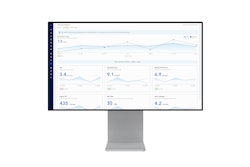
TrusTrace launched a major AI-driven upgrade to its platform, making it easier for brands and manufacturers of all sizes to collect, centralize and analyze supply chain and traceability data with confidence.
"In today’s high-stakes regulatory and business environment, access to accurate, real-time sustainability data shouldn’t be a privilege – it should be a given,” says Shameek Ghosh, CEO of TrusTrace. “We’ve built a powerful, AI-assisted supply chain data hub that allows companies to quickly and easily collect and analyze data at any scale, empowering them to move from reactive crisis management to proactive impact-driven strategies. This is the future of responsible, resilient business.”
Key takeaways:
· TrusTrace’s upgraded platform unifies supplier-provided, brand-owned and third-party data through advanced AI technology. The data hub also facilitates seamless data reuse, allowing stored data to be repurposed across business goals.
· TrusTrace’s upgraded platform unifies supplier-provided, brand-owned and third-party data through advanced AI technology. The data hub also facilitates seamless data reuse, allowing stored data to be repurposed across business goals.
● Seamlessly gather, structure, and share supply chain and traceability data, including supply chain mapping, certifications, chain of custody records and regulatory compliance documents, all in one centralized place.
● Detect hidden risks, assess their potential impact and address them before they escalate, with a continuously updated view of actual risks and their severity across the full supply chain.
● Move beyond reactive, check-the-box compliance to a scalable compliance framework, in which existing data is stored, packaged, and ready for any regulatory or reporting needs, with gaps automatically identified and addressed.
●Make better decisions with a unified view of supply chains across owned, supplier and third-party data. Elevate supply chain data from a regulatory requirement to a strategic asset to inform decision-making and long-term strategy.




















